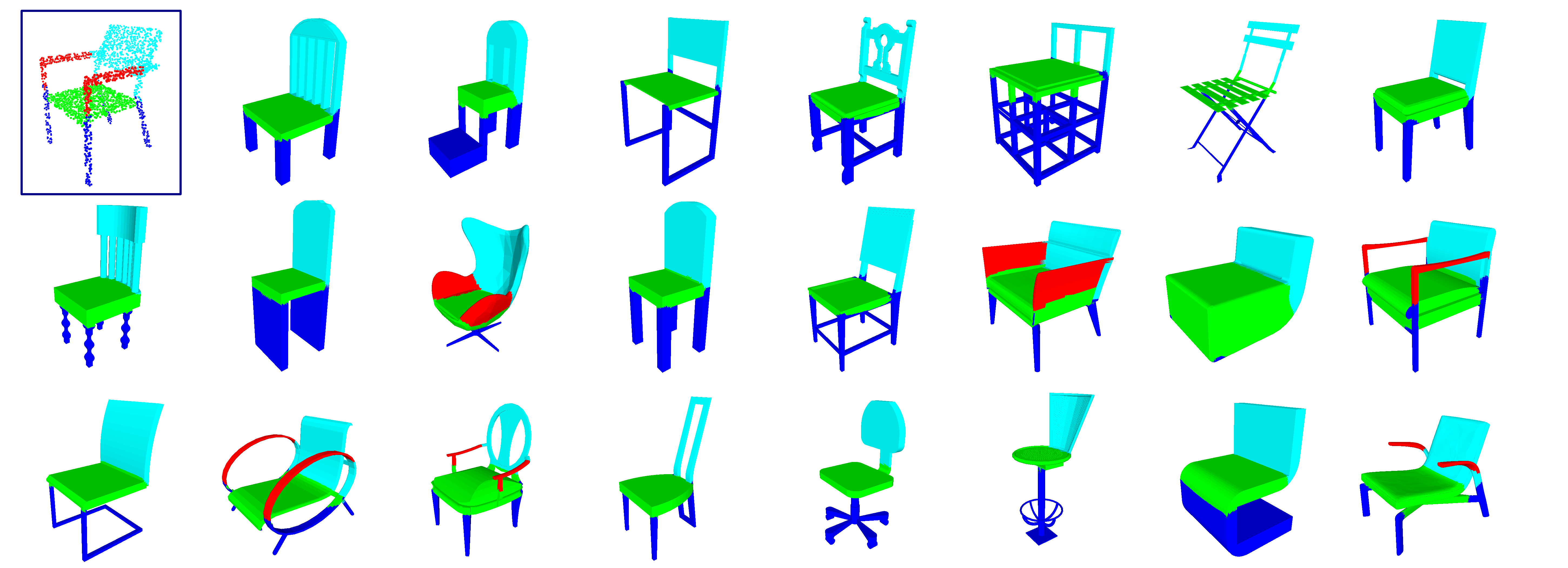BAE-NET: Branched Autoencoder for Shape Co-Segmentation
We treat shape co-segmentation as a representation learning problem and introduce BAE-NET, a branched autoencoder network, for the task. The unsupervised BAE-NET is trained with a collection of un-segmented shapes, using a shape reconstruction loss, without any ground-truth labels. Specifically, the network takes an input shape and encodes it using a convolutional neural network, whereas the decoder concatenates the resulting feature code with a point coordinate and outputs a value indicating whether the point is inside/outside the shape. Importantly, the decoder is branched: each branch learns a compact representation for one commonly recurring part of the shape collection, e.g., airplane wings. By complementing the shape reconstruction loss with a label loss, BAE-NET is easily tuned for one-shot learning. We show unsupervised, weakly supervised, and one-shot learning results by BAE-NET, demonstrating that using only a couple of exemplars, our network can generally outperform state-of-the-art supervised methods trained on hundreds of segmented shapes. Code is available at https://github.com/czq142857/BAE-NET.
PDF Abstract ICCV 2019 PDF ICCV 2019 Abstract


 ShapeNet
ShapeNet